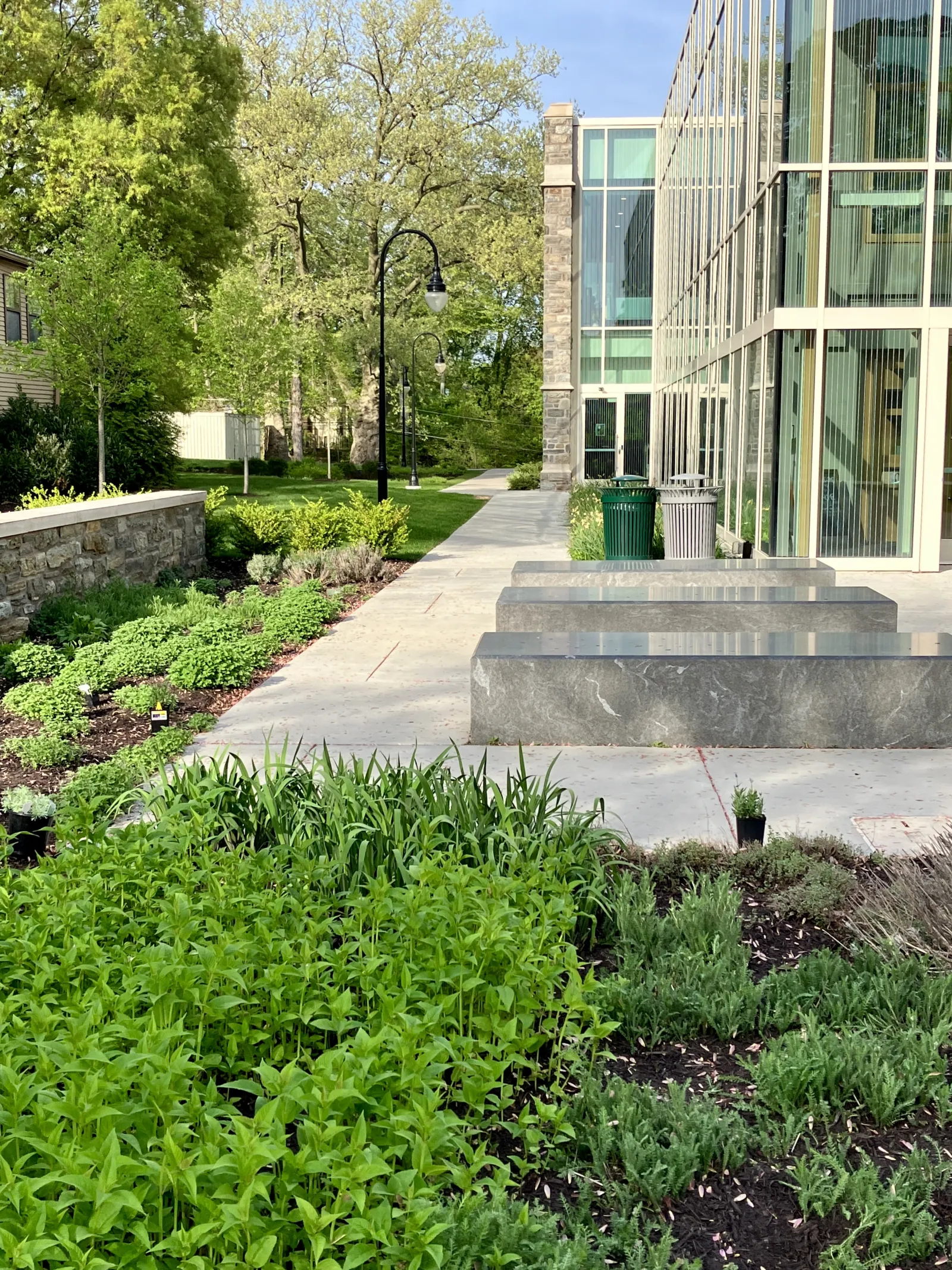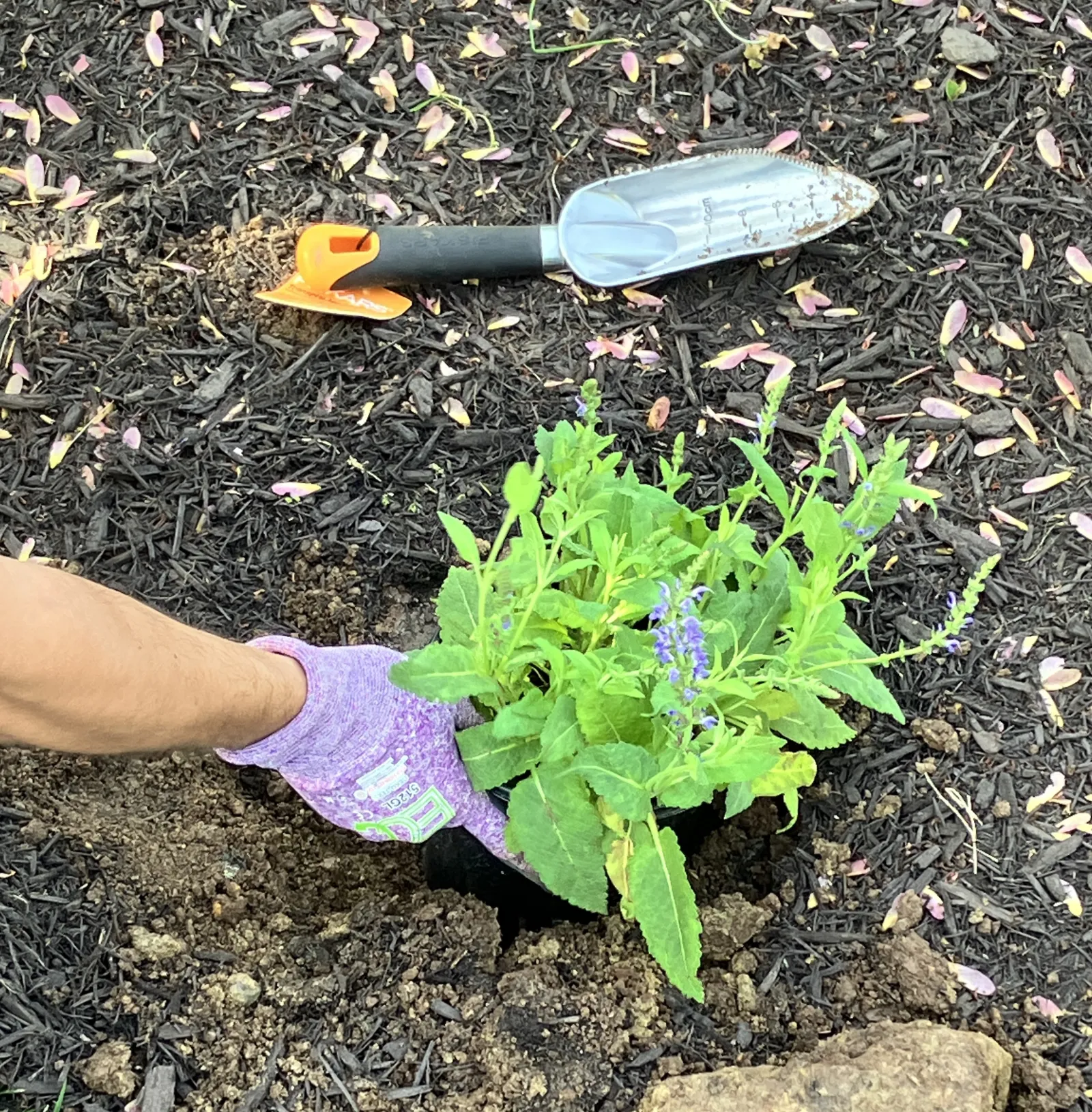Rooting for Wellness
A new medicinal garden takes shape at The Well.
When the striking new Student Life and Wellness Building opened in 2022, among its design features was an herb garden built into the slate plaza near the entrance. Ideally sited in a sunny spot, sheltered and warmed by a low stone wall, the garden was initially planted with common herbs such as mint, thyme, oregano, and rosemary.
In May, that garden got a major makeover and a new name: The Healing Garden. The revitalized space, now filled with plants considered to have medicinal properties, is an outgrowth of Bryn Mawr’s holistic wellness program, called OwlWell. According to Wellness Program Coordinator Erika D’Andrea, one of the aims for the garden expansion is to help encourage experiential learning through related programming.
“Instead of just reading about the benefits of medicinal herbs in a textbook, we want students to have the chance to plant the herbs, to harvest the herbs, and process them,” D’Andrea says.
Also driving the garden makeover is the idea—well supported by a growing body of research—that connecting with the natural world can enhance health and well-being. “We’re hoping the garden will help get students outside more,” D’Andrea says.
D’Andrea, who worked previously as a gardener and educator with the Philadelphia Orchard Project, came up with the Healing Garden plant selections with the help of a former colleague, Ella Heron. Their criteria: optimize beauty, invite pollinators, and provide maximum engagement with students. To that end, the garden design includes early spring bloomers, as well as plants and shrubs that produce flowers and fruit into the fall.
While some of the original herb plantings remain, the garden also now includes flowering perennials such as yarrow, artemisia, echinacea, and bee balm (also called wild bergamot)—all of which can be made into tinctures, or dried and made into teas. An aloe vera plant (whose succulent leaves produce a skin-soothing gel) has been planted in a large pot that can be brought inside in winter. The garden is also now home to a common fig tree and fruit-bearing shrubs such as elderberry, currant, and Asian persimmon.
The Healing Garden will be managed by the staff of the OwlWell program, its team of Peer Health and Wellness Educators, and the student coordinators and volunteers of the Bryn Mawr Community Garden, which is located close by, next to Wyndham Alumni House and New Dorm.
“My hope is that it becomes a complete collaboration, that the folks who are involved with the Community Garden will see this garden as an extension of their space,” D’Andrea says.
Hannah Cosgrove ’25, one of the Community Garden’s three coordinators, is excited about that prospect. “It will be great to be able to help them out, and have them help us as well,” says Cosgrove, who notes that the Community Garden, due to its small size, does not have enough work to employ all the volunteers who would like to get involved. “This is an opportunity for more engagement with gardens on campus.”
Published on: 06/07/2025

